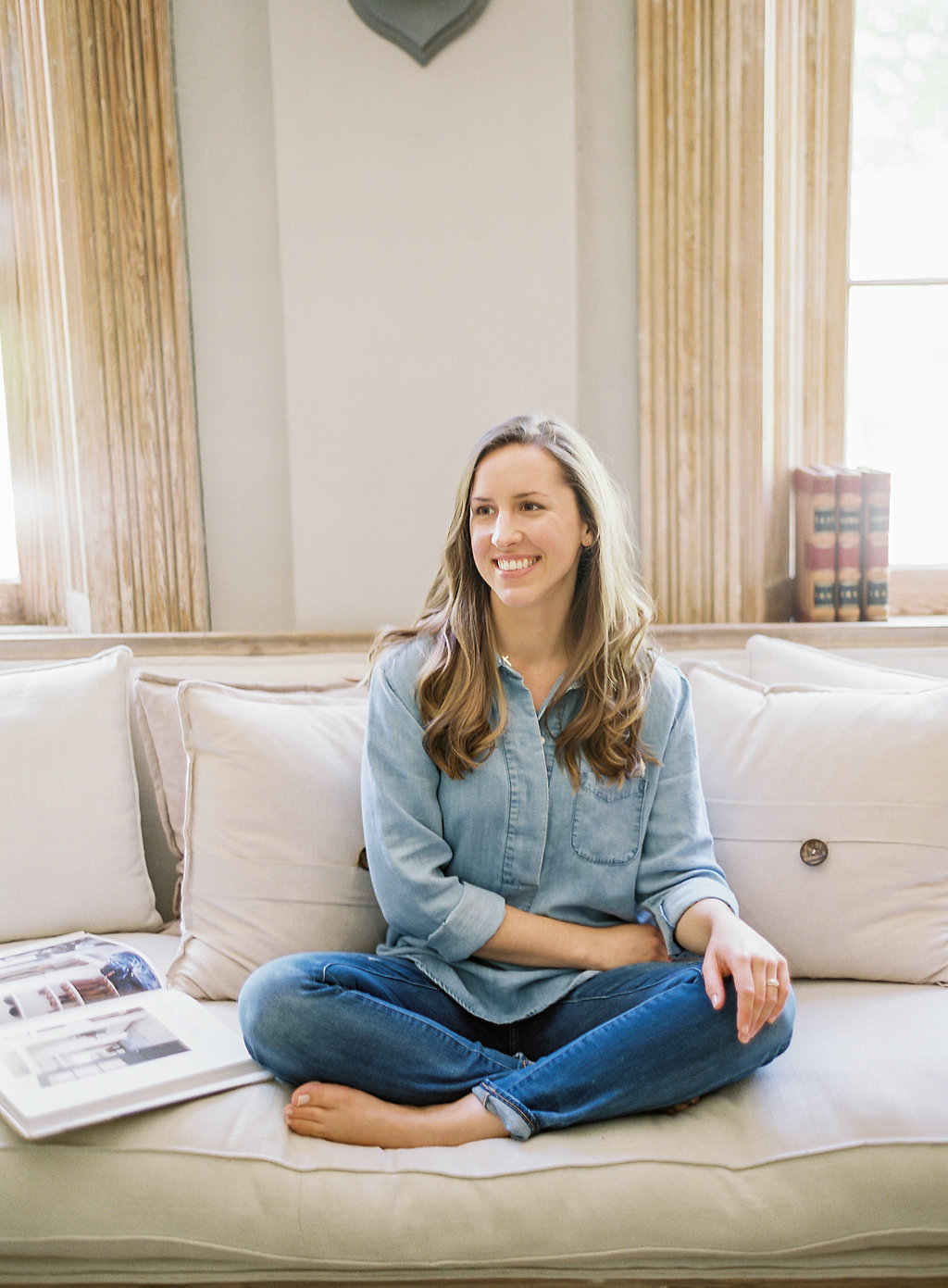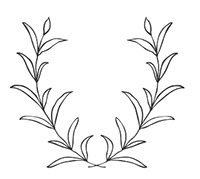What’s in My Camera Bag | Kristen Lynne Photography | Warrenton Wedding Photographer
I have had several photographers ask what type of gear I shoot with. Most new photographers don’t have a ton of money to spend, and quite often they want to know what lens(s) to buy first. I figured I would share with you what gear I use and offer some tips to help you decide what to buy first! So let me start out by telling you what I use and why I like it!
Digital Camera Bodies:
(2) Canon 5D Mk II
(1) Canon 5D Mk III
I am a strong believer in having backup gear, especially if you are shooting weddings. A portrait session can be rescheduled if something crazy happens on the shoot (like you drop your only camera and lens) but you can’t redo a wedding. My very first camera body was the Canon 5D Mk II. When I booked my first wedding I made sure that I would have enough time to save up for a back-up camera, and I did! Enter my second 5D Mk II. This is an awesome camera and I don’t really have any complaints about it. It wasn’t until I purchased my speed lights that I REALLY had the itch to upgrade to the Mk III.
Three of my FAVORITE things that the 5d Mk III offers:
(1) Amazing low-light Image Quality (it handles the noise beautifully)
(2) Silent Shutter Mode (this is HUGE for me during wedding ceremonies)
(3) Total Compatibility with the ah-mazing 600 EX-RT speed lights – I have total control over my speed lights from across the room. They can be powered up, powered down, turned off/on… without pocket wizards or radio poppers!
Here is my lens line up:
.jpg)
Canon 50mm f/1.2L USM
Canon 85mm f/1.2L II USM
Canon 100mm f/2.8L Macro IS USM
Canon 24-70mm f/2.8L USM
Canon 70-200mm f/2.8L II USM
.jpg)
When new photographers ask me what lens to buy first I tell them a 50mm. Although an 85mm isn’t a bad idea either. My 50mm is on my camera just about 85% of the time. I love how versatile it is! During receptions it’s really the only lens I use because it can get those fun dance floor shots and is great for the cake cutting too! Having the wide open aperture is fabulous for a shallow DOF (depth of field) and for working in low light, but it can also be VERY tricky. It is very easy to get the focus wrong on a portrait when you are dealing with what seems like a hairline of a focal plane! My very first lens was the Canon 85mm f/1.8. What a great lens! If you are just starting out I strongly suggest you check this lens out! It is a LOT of lens for your money. I think it goes for around $300-350ish. A great buy and it takes beautiful images! F1.8 still gives you a beautiful shallow DOF and is great practice for when you’re ready to upgrade to the f/1.2.
.jpg)
I love my Macro lens and I use it mostly for ring shots at weddings. Macro photography can be a lot of fun, but it also tests your patience and steady hands! If you are shooting at f/2.8 and you are only inches away from your subject… just breathing can make you go out of focus! About 95% of the time I shoot in manual focus with my macro lens; it’s just easier.
My 85mm is giving my 50mm a run for its money! My last upgrade was the 85mm f/1.2. It is a really, really sweet lens. My problem is that I’ve become so used my my workhorse 50mm f/1.2 that I sometimes forget that beautiful 85mm is in the bag! Ugh! But that is changing. The 85mm is a fabulous portrait lens!
My 24-70mm is probably my least used lens. It is one of those obligatory purchases for wedding photographers and I really only use it to capture the venue shots and large group shots. And that’s about it!
.jpg)
The 70-200mm f/2.8 is another great lens! (side note – I must say Canon has some pretty nice glass!) I tend to not shoot with this lens as much just because it is a heavy, big lens. I use this lens mostly during the ceremony to get those close shots without being distracting to the guests. It’s also great for capturing a couples “first look” without being obtrusive of the moment. But then it’s right back to my 50mm and 85mm for the couple’s portraits!
.jpg)
Here is one of my three (yes, three) speed lights. Like I said, I like to be prepared for anything. Although there are some wedding photographers that love OCF and have been known to show up at a reception with 5+ speed lights… I prefer to keep things simple. If the reception room/area is small I will set up one light there, and then have the other light on a stand on standby next to the cake or whatever else might be going on. This saves me time from moving stuff around all night. For wedding photographers that are just starting out, you need at least one speed light. Receptions always seem to get going after the sun goes down and you need to be able to capture it all! You can do some great things with one speed light and a light modifier. I have the Spinlight 360, which is a fabulous on camera light modifier!!!!
Film Cameras:
Canon EOS 3
Contax 645 AF
.jpg)
When I first started to explore film I knew I wanted to eventually shoot Medium Format film. But I needed to practice on a less-expensive camera and medium first. So I purchased the Canon EOS 3. The EOS 3 and 1V were both recommended to me, but I chose to go the slightly cheaper route and got the EOS 3. This biggest thing for me was to purchase a camera that was compatible with my existing lens line up. Check! The EOS 3 also has a really cool AF feature. In a nutshell (without using technical terms I’d have to look up in the manual) there is a special AF setting that allows the camera to focus on EXACTLY what you are looking at in the frame. Say what?! Is this some sort of robot camera?! I like to think so. :) You have to calibrate the camera for your eye movements, etc. But it works! The only problem with me, is that I’m not JUST looking at the one spot in the frame. I tend to check out the entire frame, then the focus point, then around the frame again, and so on. At this point I’m pretty sure the camera is mad at me and we get into a bit of an argument. So I usually resort to the standard AF/MF.
.jpg)
And then I graduated to the Medium Format camera. Ahhhhh. I just wish this camera wasn’t so darn expensive. I mean really… It’s all about the lens here. I scoured the internet for ways to slap this lens onto a Mamiya 645, but found nothing. Well, I could have a custom adaptor made, but the expense of it would negate the original purpose of trying to save money. So the Contax it is. I don’t know how many articles I read that hyped up the awesome ergonomics of the knobs, but I have to be honest; I just wasn’t feelin’ it at first. I have to lift my hand up and turn the shutter knob… not the most convenient, but with anything, we all adapt!
.jpg)
And last but not least, my light meter. To be brutally honest I wasn’t really sure how to use one until I got my film cameras (and needed one). Today’s modern DSLR’s have a pretty darn good meter built in. And if for some reason the meter is a tad off you can correct for it in post processing. Film is a bit different! You only get ONE chance to get it right, and these older cameras don’t have the most reliable build-in meters. I have to say, I was surprised at how easy it was to figure out the light meter, and it works like a charm!
.jpg)
So just a few more tips for photographers that may just be starting out. If you can’t afford the best, look to see what is second best. I don’t recommend buying the cheapest option out there. With camera gear, you usually get what you pay for. Just take a little more time and save up the extra bit to get something of good quality. If you only have money to heavily invest in ONE piece: camera vs. lens, I recommend investing in the lens. Great glass will last you (just about) forever. The technology with the DSLRs is constantly changing and there will always be a “reason to upgrade.” Also, don’t forget to look at refurbished products. Canon now offers a 1 year warranty with their refurbished items! Awesome! Online sites like B&H Photo and Adorama also have a “used” department and they have a fairly good rating scale for the condition of the items. Don’t forget to check out your local camera stores, they often have used gear for sale too! I’m very hesitant to purchase things on the internet from unknown sellers. Be mindful when buying from Ebay and even Amazon.
If you aren’t sure of what to buy, or need a review on a piece of equipment, check out Ken Rockwell’s reviews here. And if you are like me and find those manufacture’s guide books useless, check out David Busch’s books here. He breaks it down for you so you know exactly what button does what AND he also proves real-life scenarios that benefit from that specific feature. I recommend purchasing a book and reading it while you wait for your new camera to arrive! If you need some guidance with on-camera and off-camera flash, check out Neil Van Niekerk’s books and blog.
I hope this blog helped to navigate some gear and provide you with some resources if you are just getting started!







